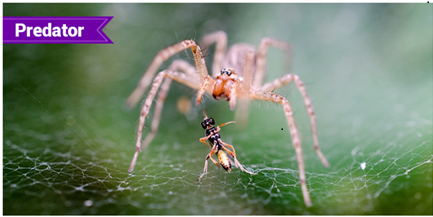

If its stealth maneuvers fail, the frogfish has a second option - like an anglerfish, it has a modified spine that functions as a fleshy "lure" that attracts prey. A giant frogfish's mouth can stretch to 12 times its size, so the frogfish can gobble up its prey in one giant gulp. These fish can change their color, and even texture to help them blend in with their environment.

Giant frogfish may camouflage themselves in sponges or on the ocean bottom. They have a rounded appearance and sometimes walk on the ocean floor using their pectoral fins. These don't look like bony fish, but they do have a bony skeleton, just like some more familiar fish such as cod, tuna and haddock. They're lumpy, they don't have scales, and they are expert camouflage artists. Sometimes, the blenny is mistaken for the cleaner wrasse, in which case the mimic approaches the host fish, bites a piece from a fin, and escapes.Giant frogfish camouflaged in yellow sponge, Mabul Island, Malaysia. The relationship is symbiotic, because the wrasse benefits by obtaining food and the host fish benefits by having parasites removed. Large fish permit the cleaner wrasse to approach and remove parasites from their body surface and the inside of the mouth. For example, the sabre-toothed blenny (Aspidontus taeniatus) closely resembles the cleaner wrasse (Labroides dimidiatus), both in its colouration and its behaviour. Some predators make use of camouflage, while others use aggressive mimicry, passing themselves off as a harmless creature. Predators obtain their prey by foraging, which may include searching and hunting, or may be a matter of lying in wait for prey to ambush. Thus domestic cats have a pattern of nocturnal hunting that is independent of their food supply, but matches the availability of their natural prey. Many predators have a marked circadian rhythm. The northern shrike (Lanius excubitor) usually feeds upon insects and lizards, but in the autumn the lizard content of the diet drops to zero, even though the lizards remain plentiful. What is predation in biology In biology, predation is a common feeding behavior of natural animals, plants, and microorganisms where one species feeds on another for its survival. These may be related to the availability of prey, or the rhythms may be endogenous, persisting independently of environmental factors. Examples are wolves hunting a deer or a moose, an owl hunting the mice, and the lion hunting various animals. Many predators have rhythms of predatory behaviour. This aspect of food selection is almost certainly related to the particular nutritional requirements of the predator. is available, these are taken preferentially, even though the redshank would gain much more energy by sticking to worms. Thus redshank (Tringa totanus) when feeding upon the marine polychaete, Nereis sp., select large worms whenever possible and pass over small ones. The relationship between hunger and hoarding is complex, differs from species to species, and serves different functions in different species.Ĭhoice of prey is often dictated by availability, but many predators may concentrate on one prey and then suddenly switch to another. Thus ravens store in response to demand, whereas shrikes store in relation to the abundance of available prey. Ravens store prey at the time that they are feeding their young. Ravens (Corvus corax) are more likely to store food when they are hungry, whereas shrikes (Lanius sp.) store more when they are satiated. Many birds and mammals kill more than they eat and store the surplus. Some birds eat the food themselves and then regurgitate it to their young, while others select smaller prey items than those that they would eat themselves. Thus domestic cats (Felis catus) and cheetah (Acinonyx jubatus) usually kill their prey soon after capture, but when it is for the young they carry live prey to the litter and release it in the presence of the kittens. The predatory behaviour itself may also be different when it is for the benefit of the young. The begging behaviour of the young is the prime stimulus by means of which the parents adjust to their food requirements.

Birds of many species adjust their parental foraging to the size of their brood.

Usually, obtaining food for the young is under the control of stimuli from the young, rather than the hunger of the parents. Many predatory species obtain food that they do not eat themselves, but give to their young. In most animals, the speed and efficiency of prey capture increase with hunger, but in the praying mantis (Hierodula crassa) and the jumping spider (Epiblemum scenicum) the stereotyped movements of prey capture remain unaffected by hunger. The motivation for predatory behaviour is usually hunger, but this is not always so. The behaviour by means of which an animal of one species, the predator, kills and eats a member of another species, the prey.


 0 kommentar(er)
0 kommentar(er)
